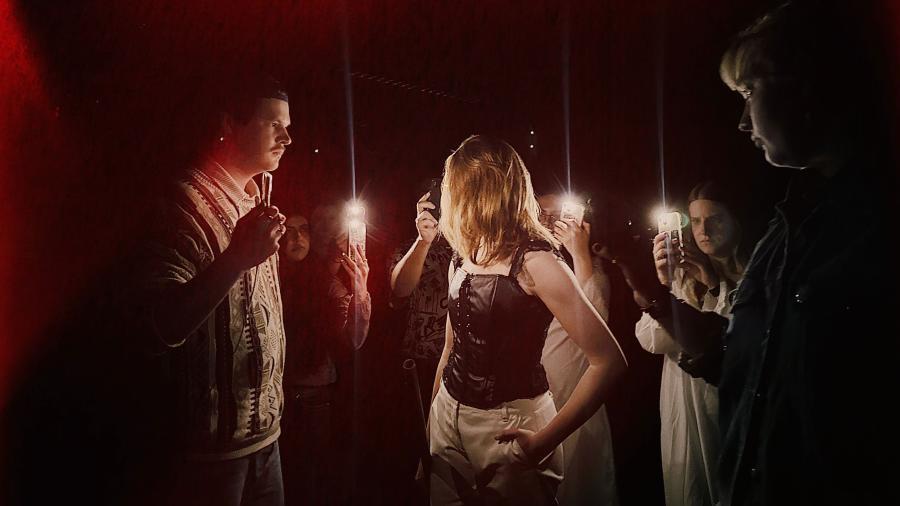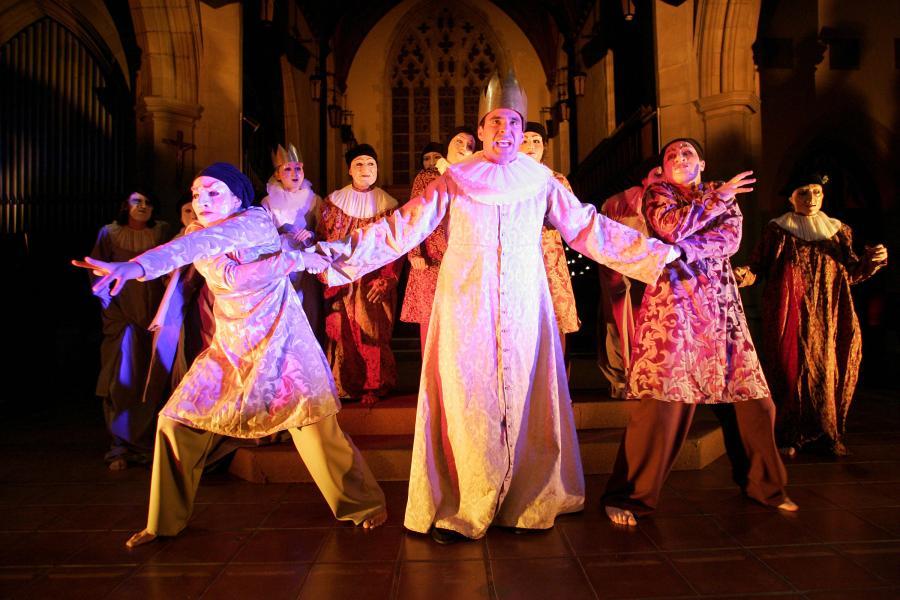Westmont News
Audience Thrust Into ‘The Capulets’

By
Scott Craig
Westmont’s John Blondell, a longtime professor of theater arts, puts his own contemporary, site-specific spin on Shakespeare’s “Romeo and Juliet” as part of a mini-festival about the famous tragedy Thursday, Feb. 29, at 7 p.m.; Friday, March 1, and Saturday, March 2 at 7 p.m. and 9 p.m.; and Sunday, March 3, at 7 p.m. in and around the Community Arts Workshop (CAW), 631 Garden Street, in downtown Santa Barbara. Purchase tickets to “The Capulet Black-and-White Ball,” which cost $20 for general admission and $12 for students and seniors, at westmont.edu/boxoffice. Black-and-white attire is required; comfortable shoes are recommended.
The mini-festival includes a new play, “The Romeo and Juliet Senior Citizens Project — A Comedy,” written by Jami Brandli and directed by Ann Hearn Tobolowsky. LA’s Road Theatre produces this play for one performance only, Saturday, March 2, at 4 p.m. in Westmont’s Porter Theatre. Tickets, which cost $20 for general admission and $12 for students and seniors, are available for purchase at westmont.edu/boxoffice.
As the performance begins, audience members are invited to the masked ball where Romeo and Juliet first meet. “For our production, the audience moves in and about the space between the Capulet house, Friar Laurence’s cell and the street — to involve them directly in the action and to bring them close to the unfolding love story between the two young people and how it affects those around them,” Blondell says.
He has cut and refashioned Shakespeare’s play, refracting it through a contemporary lens using modern staging techniques. He brings audiences directly into the beating heart of the play so they experience a street brawl and enter a tomb.

Blondell has previously staged site-specific plays: “King Richard II” at Trinity Episcopal Church in Santa Barbara in 2005-2006 and later in a derelict cathedral in Gdansk; a Macedonian novel in a small village; and a pop chamber musical created for an abandoned discotheque in Poland.
“In each case, the site fused with the material in unforgettable ways,” Blondell says. “The action becomes wedded and welded into the environment, into the actual history of the place. The audience becomes immersed, and a participant, in the action.”